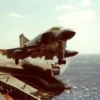Leaderboard
Popular Content
Showing content with the highest reputation on 03/06/17 in all areas
-
Good afternoon all! It's taken me since Christmas and has been a bit of a cursed build (see below) but here is my first ever He 111: This an aircraft of Kampfgeschwader 55 'Greif' and fought in the Battle of Britain and is actually part of the Airfix BoB 75th Anniversary pack. Built out of the box but with the eduard interior pack and masks for the canopy. I refrained from adding rivets on this one but tried out some new techniques which some I'll use again, some I won't. Pastel weathering for exhaust fumes was a new one for me as I usually airbrush these on. This worked well on the top of the wings, particularly where I laid down white, then grey then finally black pastels to create a heat damaged paint surface and then the usual soot from the engine. This didn't work so well underneath as the lichtblau showed every mistake and worse still, the matt coat started coming away where I tried repeatedly to get the effect I wanted. I ended up correcting with oils as the pastels simply wouldn't stick and I wasn't going to matt coat it again but this now looks overdone for me. Another new technique was stretched sprue for the antenna wire which i'm not completely sold on as it's a little thick for 1/72 and saggy; I may replace at some point but that's it for now. So why has this been a cursed build? The canopy out of the box was warped but good 'ol Airfix sent me a replacement very quickly. The eagle eyed of you will notice I've sprayed more of the canopy on the top two panels than I should have... this is to cover up fogging caused by Tamiya green top. Not that I'm blaming this but lesson learned, PVA glue from now on. Throughout building I had multiple incidents from needing milliput to fill gaps, a split fuselage which needed re-gluing and refilling, poor fitting fuselage windows which aren't the clearest meaning a lot of the interior extras can't be seen very well. I've also lost part of the rudder mechanism and the rudder itself is sitting a little low which I only noticed once I'd started painting. I didn't follow the instructions properly on the tail flaps which meant I had to perform quite a bit of surgery on them to get them looking ok. Here's some of the WIP and more pictures. Hope you enjoy! JB Finally, here she is with the rest of the BoB set:22 points
-
Hi all, Here is my latest bird. This is the well known Hasegawa Dora, here upgraded with some resin goodies. For those interested, upper wings are RLM76/82, fuselage and upper horizontal tail 81 and 82, underside and sides are 76/ bare metal. Engine covers are 76/71. Ailerons (underside) and rudder are 65. Paints are Gunze but I made my own mixes for 81 and 82, the rest is "out of the jar". The spinner spiral is copied on the one shown on "Schwarz 1 + I" of the same unit. It is a Fieseler built machine with an unknown Werknummer, so I've opted for something plausible (600378). Markings are a mix of self-made masks (thanks to my new Silhouette cuting machine, I strongly recommend it), wet transfers and decals. You may click on the photos to enlarge them. Cheers Tristan16 points
-
Here's my HB Su-34 modified to be the Su-32, second prototype 43 Blue T10V-2. I always liked the color scheme. It's about 99% finished, still some panel lines and small weathering things to do. This more or less involved a reshaped nose, reshaped tail sting with some bumps, Su-30 front wheels and mudguard, scratchbuilt ladder, a slightly modified Su-15 pitot tube and the proper antennas and sensors. Lots of plumbing for the landing gear and Armory rear wheels. I have the Polygon Su-34 book which has a lot of walkaround closeup photos of 43 Blue's details and it's different camouflage which was invaluable. I had few fit issues, not sure if I ever used filler. Paint was Akan and mixed myself. I'm looking forward to doing some production Su-34 versions with the Kittyhawk whenever it comes out but I wouldn't rule out doing another Hobbyboss, perhaps the brighter "Greenbottle Fly" 45 White T10V-5 that I saw at Farnborough years ago. Cheers, pb15 points
-
Evening all, was back at work today but did finally manage to get this beauty finished over my days off this week. AFV Club F-5N straight out of the box. I do have a PJ Productions pilot to drop into the pit shortly and I did have to replace the AFV Club decals with a set of Two Bobs decals, fortunately for an aircraft in the same colour scheme! A bit disappointing the the kit decals didn't play ball but the quality of the Two Bobs sheet kinda made up for it. Main finish done with Tamiya acrylics airbrushed, details done in Vallejo acrylics. Klear used before and after decalling and weathering done using with Promodeller Dark dirt wash, Tamiya smoke, pastels and silver pencil. Photo's taken outside with my trusty phone so hope the pics are up to scratch, nose pitot probe lasted less than 30 secs!! Will replace it with a section of needle I think. Hope you like! I'm in love with her 😉 Eng13 points
-
I picked up this long out of production single-seat 1/32nd MiG-29A cheap recently, and fancied doing a Polish version so also ordered a set of Decals from Techmod. I built this more or less out of the box, but did close the upper air intakes with plastic card, made some FOD guards for the exhausts and intakes, and added a seat belt set from Eduard, but kept the cockpit closed as it's fairly basic for this scale. Paints were from Xtracolour with varnish coming from Humbrol. I thought about coating it in gloss, as the Polish MiG-29s are very shiny and clean, but decided to do more of a satin coat for a better scale effect. The Revell kit is actually a MiG-29A version, but after doing a little research the differences between that and the G version very mainly internal so I could get away with it without too many problems. MiG-29G, Polish Air Force, 41st Tactical Fighter Squadron, Baltic Air Policing, 2012. With the new Trumpeter kit hitting the shelves, no doubt a few more of these will be sold off - hopefully I can snap another one up at some point. Tom9 points
-
Built as part of a Heller 60th Anniversary group build on HyperScale's 1/72 Group Build Forum. A bit rough in places, but life's too short to worry about it. Changes to kit were: - Lower canard elevators and wing flaperons - Modify thrust reverser to sit as per parked aircraft - Scratch-built token after-burner flame holder - Replaced nose and fin pitots with scratch-built metal ones - Use Maestro resin seats with scratch-built firing handles - Added HUD and cathode ray tube to coaming - Added periscope viewers under rear cockpit coaming - Added small brace between air-intake and fuselage each side - Added a bit of detail to rear undercarriage legs - Replaced solid front undercarriage drag-link with twinned rods. [EDIT] It's been pointed out to me that I have the faces of the main wheels facing inwards rather than outwards, this error now corrected!8 points
-
Hi ! I would like to present here my model of HMS Warspite from 1942. I finished model I guess 2 years ago. Build is more/less out of the box from Academy premium edition with addition of Flyhawk Pom-Poms and Master Oerlikons. The main focus was to try out working with Pontos PE sets before using it on other major RN battleship project. Jan / Slokavia /8 points
-
It's back down to small scale for me at present as house move is probable - so I don't want to risk stuff that will be easily damaged.This is a Dragon kit with two in one box one navy and one marines, both nicely equipped with 12 Rockeye cluster bombs each, plus fuel tanks. I've built the navy one undercarraige up as I intend to display it on a stand with a Navy Hornet(at some point in the future !!). My first Dragon kit and I was quite impressed with the build quality and how it went together. The hardest bit was hanging the bombs they still look a bit 'off' and the yellow decals which I cut myself are far too wide. I'll excuse myself and plead small scale. Enjoy and feel free to comment Paints: Vallejo model air Cheers for looking8 points
-
Hi everyone Well she's 99.999999% finished! I just need to order some more EZ line to add the aerial wires to the tail and I'm done. It's been a long (my fault) build but the Airfix kit goes together very, very nicely indeed and builds into a very pleasing model of the legendary B17.... Ill post some better pictures in due course. Cheers Iain8 points
-
This is my completed Kittyhawk Su-17M4 Fitter.This kit has been an enjoyable build, despite some of it's well publised issues.Aftermarket used:-HAD Models corrected mach-cone (a very nice piece)Master Model pitot, antenna and gun barrelspeiceArmoury resin multiple bomb racks and OFAB-100 bombsArmoury resin wheelsCoastal Kits Display Bases Large Desert AirfieldPaints used:-Hataka paints for the camo, and undersideA mixture of Akan, Mission Models and Vallejo for the other detailing Weathering has been done using UMP Dark Dirt wash, Humbrol Smoke Weathering Powder, and Tamiay weather masterIan G-16 by ian gaskell, on FlickrIan G-2 by ian gaskell, on FlickrIan G-3 by ian gaskell, on FlickrIan G-3 by ian gaskell, on FlickrIan G-4 by ian gaskell, on FlickrIan G-5 by ian gaskell, on FlickrIan G-6 by ian gaskell, on FlickrIan G-7 by ian gaskell, on FlickrIan G-8 by ian gaskell, on FlickrIan G-9 by ian gaskell, on FlickrIan G-10 by ian gaskell, on FlickrIan G-11 by ian gaskell, on FlickrIan G-12 by ian gaskell, on FlickrIan G-13 by ian gaskell, on FlickrIan G-14 by ian gaskell, on FlickrIan G-15 by ian gaskell, on Flickr7 points
-
I am posting these pictures following a request for them and information on the build in the WW1 aircraft section of this site. I am also including pictures of the scratch built Beardmore engine as this has featured as part of the discussion. There is a full build log for this model on Airfix Tribute Forum under conversion corner, and ww1aircraftmodels.com in the under construction section if anyone is interested. I have also included some notes on the type for those modellers who are not familiar with this aircraft. In the build logs referred to I used wings from the old Veeday BE 2c. This kit is a rare bird these days and anyway Airfix have now produced a first class model of this type and I would recommend it as the starting point for this conversion as the outer wing panels of the FE 2b and the BE 2c were the same. However the FE 2b had a greater span so I would either make new centre panels from card (as on my original conversion), or use pieces cut from a second Airfix BE 2c kit. The Lewis machine gun, wheels, struts and propellor could all be taken from the Aifix kit. The remaining parts would have to be scratch built as per the build log, unless that is you can find an Aeroclub Beardmore engine - another rare item these days. The FE 2b was designed and built at the Royal Aircraft Factory in 1915 in response to a request from the War Office for a "gun carrier" for armed reconniassance, escort and pursuit. The prototype flew in March 1915 buty problems in supplying engines meant that the first order for 12 machines was not completed until the autumn of that year. Later the type was only supplied slowly because of the shortage of engines. However it quickly proved to be superior to the Fokker monoplanes that were causing heavy casualties among the BE 2c reconnaissance squadrons, and the type helped to achieve air superiority (with the DH 2 and Nieuport 11) for the Allies during the summer of 1916. Even after the introduction of the early Albatros fighters in September 1916 the type could hold its own in the hands of a good crew: von Richtofen was famously hit by a bullet from his own side when he was involved in a dogfight with these machines, and German pilots Schaefer and Ulmer were shot down by gunners in this type. The problem for the RFC was that by 1917 the type was obsolete but was kept in service as an escort because there were no suitable replacements. After it had been withdrawn from daylight sorties it continued to be used as a night bomber until the end of the war. Early FE 2b's had a complicated oleo tricycle undercarriage: this was modified in the filed to a simpler V and later replaced on production machines by an even simpler V. The type was deployed against Zeppelins in the UK but its slow rate of climb and poor ceiling made it unsuitable in this role. In all over 2000 of the type were built and it served in a wide variety of roles. It has had a bad press in the past from those who looked at it from the comfort of armchairs and noted the high losses suffered in 1917 when the type should have been withdrawn. In reality it was a good design for its time being strong, relatively easy to fly, and able to compete well against contemporary types: its rapid obsolescence reflected the pressures of war, not the deficiencies of the design itself or the crews who operated it. I built the engine using card, rod and stretched sprue and based it on drawings in DataFile No 147 and photographs of the engine from Viling's WNW build on this site and the WNW website. I apologise for the small images but hopefully they will be useful to others. This is the engine from the right side: This is the engine from the left side: These photos show the engine installed in the nacelle before I put the top wing on to the model. All markings except the serial were hand painted and the model is rigged with 40 SWG rolled copper wire. It represents an early machine operated by 11 Squadron RFC at Isel-le-Hameau in September 1916. P7 points
-
Thanks Bill. We lived in Salisbury for a while and it has to be a close second to Bath for me, lovely place. The show was good but somewhat restrained by my 'build your stash first' discipline which I'm trying to maintain. I did pick up some tool bits but nothing interesting, although I popped into the Model shop and bought some Vallejo Silber ready for whichever model I needed it for... written down somewhere... I also went to Old Sarum, where I learned to fly, for a bit of nostalgia... covered in people jumping out of aeroplanes! Had a mooch around the Boscombe Collection though - not my theme but thought of you when I saw their Wasps and Nigel when I saw the Sycamore (Nigel they've got the back seats wrong!) Had a great chat with a chap who's rebuilding an Auster - just the skeleton at the moment. I love meeting interesting people. Molly says "What's stopping you?" Thanks Nigel I have an Airfix Lancaster box nicely positioned on the bench that tends to get my parts (fnaar!) but cut/tape stored for later use. Thanks Benedikt - great tip and, if I ever work out what JB109 looked like I'll try that. There are so many variants that I need to say "I will build this mostly OOB", otherwise I'll never start (see below). Enjoy the storm! Thanks Charlie There are some photos of the second prototype here on the IWM site. It's a great resource but tricky to search and it doesn't seem to open itself to Google etc. Thanks Tony al·le·go·ry (ăl′ĭ-gôr′ē) n. pl. al·le·go·ries 1. a. The representation of abstract ideas or principles by characters, figures, or events in narrative, dramatic, orpictorial form. b. A story, picture, or play employing such representation. John Bunyan's Pilgrim's Progress and HermanMelville's Moby-Dick are allegories. 2. A symbolic representation: The blindfolded figure with scales is an allegory of justice. Spot on. I was hoping for instructions. Ho hum. Perhaps the chaps, sorry, die chaps (thanks Google translate) at Revell went through the same process I'm going through now trying to work out what Halifax had what. After some time they obviously decided to use 'this or this or this...' and just put all the options in before the nice men in white coats took them away. Look, parts off the sprue (using my Tamiya craft saw which is a bit, just a bit, stronger than the RB Productions ones): I've scanned and printed a larger image of ZA-J so that I can see what's what prior to spraying the internals 'K' (some sort of greeny grey yellowy colour) and 'I' (anthracite grey with a bit of light grey in it). But wait... where's the nose? Ah, here are the bits... I shall use some glue at last: Tiny bit of warpage, pegged. Now then, those windows: Wha... where... And look Dad, no turret on the front! tonyot did a great job on his and did correct the windows... What did I say above? 'There are so many variants that I need to say "I will build this mostly OOB", otherwise I'll never start' Right, get on with it, I AM just a kit basher after all. Perhaps I should change the title to 'Halifax B Mk II, an allegory'?7 points
-
Hello Greg and Arniec - thanks! ------------------------- Pilot and cockpit done - nothing really special with the kit, detail is sufficient given the scale. Machine gun sub-assembly also in position. Upper wing halves glued onto lower wing. Before doing that, I did measure out and drilled holes to place some wire as a brace/post in front of the rads. A bit more work sliding the wire through the upper wing, but at least here it is more sturdier with the thicker plastic than trying to drill a hole in the rad itself. Plus, cleanup of the surface is free of any worries of marring surrounding detail. The kit includes three types of rudders - for the 109 G-6/AS, the taller rudder without the extra trim tabs on the trailing edge is the one to go with. Also removed the raised detail representing the actuator arm, replacing with stainless steel wire. The underside fuselage intake is perhaps the one area requiring the most attention for backdating, as it needs to be the earlier shallow type. I've made a start of cutting it open by scribing with a needle. Razor saw would be quicker, but I find the blades too flimsy to give a straight cut. A couple bulges in the forward end also need to be removed. regards, Jack7 points
-
This was one of the uses for my mix of Milliput last week, a dirty great gap between the fuselage and the cabin side: I think this is my fault rather than the kits as the cabin bulkhead is not properly square. With hindsight I should have glued some location strips inside the fuselage sides so assembly was made foolproof. Here it is filled which I will clean up when the front is more enclosed: Before I added the top piece I drilled out for the main gear legs so that any swarf getting inside could be got out and not rattle around in there forever: That also confirmed this is definitely not a tail sitter: Now the clear orange has had a week to fully harden up I felt it was safe to mask inside the skylights: I made the interior masks slightly larger than the ones on the outside to minimise any edges visible. I also masked up the padding on the front seats: I would normally seal the edges of those with some liquid masking but I don't have any with me so instead I made little rectangles of Blu Tack to provide the sealing: Early on in starting to mask the main blades I found the Alclad was up to its old tricks - despite having left it for a week to cure: I decided to press on with the the masking, I will just have to redo the Aluminium after the black undersides have been done: I have ordered some more black paint. I hope it arrives in the morning as I need it to finish of the seats and rest of the cockpit interior. With luck I should be on track to get some serious airbrushing done tomorrow. Bye for now, Nigel7 points
-
Good evening, colleagues! This model was started a long time ago, but I postponed it several times due to different reasons. That was not enough information on the navigator's cabin, then exhausting work with undercarriage bay, then... аnother problem's, аnother rit's. And again, and again ... But then I felt ashamed of myself! Gathered with the forces, having thrown all other projects, and AT LAST!!! I FINISHED !!! My Boston !!! Some photos of the assembly process you can see here (if you are interested): http://www.greenmats.club/topic/3519-douglas-a-20b-boston-mpm-172/#comment-41634 All comments and criticisms welcome! Thank's for your attention, Sergiy (48).6 points
-
Hi, I built this for the 'From Russia with Love' GB. WIP is HERE if you are interested Hope you like her6 points
-
Wotch Tony. It is indeed astonishing. I worked as a bin man on the council lorries one Easter back in the 80s (two weeks, nearly bloody killed me) in Epsom of all places - you should have seen the stuff they regularly turfed-out from the posh gaffes around the racecourse area itself! In the short time I was there I acquired an 8mm film projector and editing block for cutting film, a parasol and a fancy Art Deco-ish clock (for a mantlepiece I didn't have). I've always wondered had I stumbled upon an equine porn ring dumping the evidence... Kind of like beach-combing on the shores of late-capitalism? I've never lost the habit I acquired as a student of skip-diving, to the mortal embarrassment of my children. Hmm...what could he be? The Heater? His superpower is warming villains to the point where they become uncomfortable and need to remove their pullovers... The feeling of power is incredible! Thanks Ced. Feels like I'm just inching forwards today for some reason. Go for it Keithski! Oh wait! Would that make it a Vacforeman? Thanks for those kind words Nigel. As Bill notes below I may however be over-engineering a simple task.... Or thereabouts.... I think you may be right that I need to apply Occam's razor. It's not as if I'm going to be constantly vacforming and need a heavily-engineered solution - just someframing that works reliably for occasional use. In total there were 6 layers of different material, and when you had them all laying on the bench it's a puzzle as to what they all do. (Before anyone thinks of deluging us in a marathon nerdfest of an explanation I must point out that I don't care either...) Right. Back to the shed. More laters hopefully...6 points
-
Have you any idea how difficult it can be to get proper Lego bricks these days? Mostly half a light sabre, bulldozer bladey, garagey doors kinda bricks lately 👅6 points
-
This model has been a long drawn out WIP over there as http://www.britmodeller.com/forums/index.php?/topic/235008954-navy-ation-wasp-the-last-post/ for a long time I had encouragement from many of our friends, not only those of a nautical bent I add, and had a very enjoyable journey through the possible, the feasible and the down-right inadvisable I have wanted a Wasp in my collection for a long time, the last time I had one Alan Hall was still in the business of entertaining us with his Airfix Magazine, long before this conversion raised its exciting little head again in Aviation News I would have bought the long awaited Freightdog model but Colin's difficulty with some aspects of production and my advancing years made me jump the gun with a refined version of the old Airfix mag favourite (I am old you know!) So with the timely gift of an Airfix Scout AH1 kit that had no transparencies to get me on the road here is my Wasp to inspect That is the lot, hope you like her I had lots of fun, quite a bit of blearghh and some moments of "lend me your towel I want to chuck it in the ring!" This is the moment after a long drawn out build that the missing kit comes out at last, I say bring it on please Colin Or even Airfix, are you watching the Britmodeller site? Thanks for looking5 points
-
Williams Bros. 1/72 Boeing 247 ICM 1/144 Tu-144 AZ Model 1/144 Tu-134 Airfix 1/144 Airbus A-300B4 Daco Skyline 1/144 737-500 Ardpol 1/48 Martin Kitten K3 AModel 1/72 Il-18D Welsh Models 1/72 Comet 15 points
-
5 points
-
Reckon Rodin said something similar about the Gates of Hell after a few days.... Taking all that needed to be into account I simplified the frame for the plastic sheet along the lines Bill suggested: ..and a smaller inlay for possible canopies etc. if needed in future: In like a kid at Christmas for a trial blast with the heat gun: A tad over-enthusiastic with the thermal input as you can see in a couple of places, but since I taped-off some of the outer holes around the periphery, the vacuum seems to have increased by about a third. Kind of ok. But I think the heat gun approach might be kept for smaller single parts, due to the surface area requiring heating. Bigger shapes or more parts and I'd be inclined to oven-bake. I tried a test of a range of shapes in order to gain a sense of how far the process can be pushed in terms of level of detail, height of moulded object etc. with the level of equipment here: Ooh. I did a little dance around the kitchen when that appeared! I'm not claiming elegance or polish but I think the vacuum side of the process is fit for the modest purposes I need it to perform for: I want to work out a more secure way of clamping the two pieces of hardboard together as my cannibalized monitor bezel isn't clamping tightly enough, but at least now I can get on with shaping a buck for the BT. I do need to ponder whether to do both door and new rear of fuselage as a single entity (albeit it as upper & lower halves) and cut after vacforming, or to mould BT and fuselage rear separately: Have a nice evening all. Tony5 points
-
Another quick update for today... While I was aiting for replacement decals for the problematic FP ones, I thought I'd look up LL716 in some reference books, to see what history it had. Seems it was with 115 Sqn before joining 514 Sqn, which means it would have had the 115 Sqn codes overpainted and replaced the 514 Sqn ones. In for a penny, in for a pound... I masked off the areas where the codes would be, making sure the edges weren't too straight: and overpainted the areas with a more solid, newer-looking coat of black: Meanwhile the Xtradecal codes had arrived, so I set about chopping sections out them to shorten their height. Here the port side on, with a sample of their original size to campare to: You can still see the joins, but a couple of coats of DACO's decal-setting solution should sort them out. Once they've been coated, I'll leave them for a day or so to bed in, and then on to the bomb bay. Meanwhile, it's the Northern Model Show at North Shields tomorrow, so I'm looking forward to getting down there... More soon... Cheers Simon5 points
-
Submarine Sandwich Wow - up to Page two and I haven't even done anything yet! Well I have sort of been working on this as I have spent a lot of time thinking about how to make this thing and what to make it from. Suffice to say there are many, many different ways of tackling this task and each have their own advantages and disadvantages. I've also been waiting on the plans to come back from my colleague at work who has been very kindly scanning and rescaling them to 1/100 scale. Thanks Tony! He has now plotted five copies of each set and returned them to me. I have had one set of each fully laminated. So it's time to get started. The plans on the larger sheet will be the 'master' set for this build as they have a plan view and a lot more external detail, but the smaller set has the advantage of these full cross-sectional views - which will be important in helping achieve the correct shapes. Now I've got to select which medium to build in. I've got some composite decking - a synthetic wood / plastic composite wood substitute that I'm keen to try when the opportunity arises but I've decided to stick with wood for this project - mostly just because I like working with it, but also because I recently discovered liquidambar (AKA American Sweet Walnut) and it carves so beautifully I'm looking forward to using it on a large scale. Here's the bit I have in mind, note how despite its size there is not a single knot in this piece. Check that the plank is nice and straight by looking down it like a rifle - this is about as good as it gets! And so to start work. Back to my personal favourite - the band saw! Cutting the liquidambar to the correct length and height. Watch your fingers! In addition I have this piece of sapelli - a relatively hard-wood from Spain, bought from the local hobby shop. It's vac wrapped in plastic, so it has to be good! The main reason that I purchased this piece is that it is exactly the correct thickness for the central deck / structure that runs along the length of the boat. Sweet! it's very easy to adjust the length of a piece of wood and relatively easy to adjust it's 2D shape - but changing it's thickness is a bit tricky without some specialist tools, so finding a high quality piece of wood at exactly the right thickness is a great bit of luck. And now it's starting, just starting, to come together. Get the big shapes right first - don't even think about details at this point. You can probably see where this is going now. I'm going to start with a central panel of Sapelli cut to the correct profile and then add a carved piece on either side to represent the pressure hull and then another two pieces to represent the saddle tanks. Hope I am I going O.K. with all this nautical terminology - I have no claim to any real knowledge of matters maritime. So as you can see above the basic construction method is going to be very simple - just build a submarine sandwich. See you next time Reconcilor5 points
-
Gracious, Magnus Pyke, another childhood hero! Love the up-cycling going on here, all this just to do those ruddy doors. I use the Mrs as a hot air source, incredibly difficult to regulate though!5 points
-
I learned that HB836 was built as S/N 103685 as a P-51C and delivered to the RAF in May 1944. The wing seems to be successfully mated to the fuselage now. The use of the wheel well has been difficult despite thinning the wings as far as I could. This has needed much more filling than is usual on a Tamiya kit. Two goes in fact ... I think it's about there now though and the lines seem to look ok. These photos may highlight that that isn't actually the case though.5 points
-
An excellent summary of the aerodynamics vs structural engineering battle that limited rotor blade development throughout - right up to the advent of composites, which were a game-changer (& were in science fiction territory for Sycamore-era designers). In early 1990 I exchanged a Lynx HAS 3 (metal blades) for a HAS 3S (composites) The headline difference was secure speech (hence the S), but this was also the changeover to composite BERP blades. The difference in performance from a modern blade tip was remarkable. My intent was not to rubbish the Sycamore's designers, who were at the cutting edge of a form of flight that was still in its infancy; rather, I was simply marvelling at how far things progressed in the 30 years between Sycamore and Lynx. Bill, all those early helos looked far more substantial than they were; weight was everything, so these of braced "sticks & wire" structure was commonplace. They were (to modern eyes) as basic as early WW1 biplanes, and for largely the same reason. Weight had the edge over power until the move to turbine engines. I keep forgetting this is 1/72. Lovely job.5 points
-
Giorgio, as Keith says it is very simple If you could scramble an egg or whisk it for an omelette that is as basic as it gets I know some consider it a dark art which is why I have shown how simple it really is I hope folks can get up the nerve to try it, it is not even very expensive, my present bottles of casting resin cost me £5 plus post and about £8 for the latex Which reminds me to re-order today! I've plenty of resin but no latex left5 points
-
If you have to ask......................... What a beauty! I wonder if she was based on a particular vessel or she's generic based on the type of vessels calling at Poole at that time. Martian will probably remember it well. Do you know scale and length. Thanks for sharing that with us Richard Kev5 points
-
I know you like steam ships so I thought I would show you a ship my Dad built when he was 16 have all his drawings of it somewhere, made it all out of tin cans then added a boiler in it, all worked. I do remember going to Poole Park with him and seeing it work when I was a lad. One day I will have to spruce it up and get it working again, its about 75 years old. [/URL] [/URL] [/URL] [/URL] [/URL] Regards Richard5 points
-
Hiya Folks, I started this one last year along with my other 45 Sqn Beau`s but due to going into hospital etc it fell by the wayside,....however I`ve finally got it finished and here it is, wearing the original delivery scheme employed by 45 Sqn Beau`s with Ocean Grey/ Dark Green topsides and Medium Sea Grey undersides; As well as the late style rocket rails, these Beau`s also had bomb racks fitted inboard but these are not included in the kit, so the racks were made from halves of a 250lb bomb and plastic sprue with bombs from an old Matchbox Mossie kit. As usual t is brush painted and I used my rapidly dwindling supply of Polly Scale colours, Cheers Tony Edit- here is the real Beau; Edit,..edit,....here is a photo of all four 45 Sqn Beau models,......the two at the front are Airfix,...those behind are Hasegawa;4 points
-
Here is another armour kit I fnished from the vintage Italeri boxing with the generic name "Armoured Car". And what can I say: Pretty good stuff. Easy to build, nice detail and looks the part. I took my time with painting and weathering it and I am pleased with the result. Whenever you run across this kit you may want to give it a go.4 points
-
Well the black paint didn't arrive this morning so I have been busying myself with other bits and bobs. The air scoop for the underside has gone AWOL so I made a replacement using a hollow rectangular part from the spares box plus some 0.25mm card wrapped around it: With the fuselage halves together I could now glue in the base for the rear skid, then marking in pencil its general angle: The redundant part was cut off and the base drilled out. The skid is just pushed in here, I won't glue it until much later in the build: Then using another mix of five minute epoxy I glued on the other side of the cabin: I finally did get my airbrush out and after spraying up some more lead foil belts with grey I got some white Alclad primer on these other parts: In the instructions paint call outs are given for Humbrol colours and the blue for the main scheme calls for number 14. I found I had two tins both of which I must have had for nearly fifty years. On inspection both were perfectly serviceable. It actually seems like nice paint: The final job of the day was to apply the blue to this lot: Its a gloss finish so I'll leave it overnight to fully harden up. Bye for now, Nigel4 points
-
I have had zillions of great pictures from our nautical helimeister, thanks Crisp, and an offer of unbroken intake parts from Brian so I'm going to try to get the more accurate rounded edges to the intake openings as well as produce the small intakes in between the fuselage and Gyron Junior intakes I began building the airbrake blades from the blue tailcone section The Airwaves tail blade shape is a very 'close' fit to the model parts but I may be able to use them I hope you will all assist me when its assessment time, there will be pictures later but that will have to be when Bill has killed the Doctor... Or not I'm going to use the resin tailcone (old number one, we'll call it) to mould a curved plate to form the external stiffeners then I'll likely mould a few finished ones for this Bucc and the Frog one which has massively overstated ones on its own blades Work begins this evening.4 points
-
Just to keep interest in this GB, here's something I got yesterday: The kit looks superb in the box with a great level of detail and the plastic is finely moulded. It's a big one, with more than 40 cm wingspan! Cheers Jaime4 points
-
Kit: 1/72 Airfix English Electric Lightning F2A - Starter kit Subject: English Electric Lightning F2A, XN793, 92 Sqn, RAF Gutersloh, RAF Germany, 1974. Details: Modelled as per reference pics from interweb and decal sheet, armed with Firestreaks ready for the potential NATO/Warsaw Pact conflict. Misc: Mr Color Paints, Humbrol paints, Xtracolor paints, artists oils. WIP Link: Here Had forgotten the ant-collision lights - pics updated! Thanks for looking.4 points
-
Well...I'm back in the saddle again. I started making a new radiator, because the kit's radiator looks wrong. Mainly the stretched "15" annoyed me. I scatch build a new radiator around the partly demolished kit's radiator. I used all the space I have inside the radiator casing and got rid of the decorative radiator shell (not seen it on photo's anyway). This widens the actual radiator (available space for the "15") with about 6mm. With the blackened brass border the protective mesh is now comparable to the "add on" mesh seen on many Bugatti 35's. The border with the mesh will be attached to the radiator with small brass strips around the tube. I checked the position of the filler cap and the connection to the engine...all is fine! I must now make a new "15" mask to suit my new radiator. More soon, Robin4 points
-
Absolutely Giorgio, but: Do invest in some pukka Lego first4 points
-
Woo-hoo!, as Blur would say1! It worked: 1. F11 with new 0.2 mm drill bit; The target hole is in bottom RH corner F11 with new 0.2 mm drill bit by Alex1N, on Flickr 2. 0.2 mm nickel silver rod passes though the hole now 0.2 nickel silver rod passes though the hole now by Alex1N, on Flickr 3. 'Bolt' in place, seen from the rear of F11 'Bolt' in place, seen from the rear of F11 by Alex1N, on Flickr I shouldn't have been so astonished that the drill worked - but you never know... Smasll but significasnt progress :). Cheer, Alex. <-- not a drill bit 14 points
-
I was about to correct the typo but I just thought that you would probably prefer it if I left it as it is! Martian4 points
-
Thank you Steve NZ ,Steve J Trevor and kent for your comments , A small update tonight . I have modified the treaad on the tyres to slightly represent the tread on the tyres used on the buchons used during filming . I was not going to do this but its a little detail that would have annoyed me forever after . took ages to remove the original tread and some difficult scribbing .4 points
-
Um... er... i'm on my side, of course! I must take a trip to the impressive bit, thanks Chris Time to get to grips with this lot: As per Darby's instructions I have removed all the items from the end-opening box, flattened it, stamped on it and set it alight. I think they're nasty too. Gosh, what a lot of parts... time to organise, as usual. I'll label up the sprues with their letters on tape to make it easier to find them when I... just a minute, Revell refer to the parts by number, not sprue? Arggghhhh! OK, calm down, which bits do I need then for my chosen BII S1 Special? It'll have 'options' on the instructions won't it, like this: Um... what the... ?? At least I can make a start... let's look at the window I need to cut out: Well, that was easy. I'm completely confused now... perhaps the kit allows more options than the schemes? Right, let's look for pictures of JB910, my chosen scheme from the Xtradecals @amblypygid very kindly sent me (thanks Chris!) 200+ images on IWM... crikey, they do vary don't they, a LOT. Google pointed me at this which shows JB910 with tiger Shark teeth and eyes! Don't panic, not a shark mouth, just teeth (and there are decals for it on the sheet). Phew. Wrong prop blades though eh? OOB, OOB, repeat after me... Off out to lunch soon so I may have some more courage later.4 points
-
Thanks guys. If you click on the links to the side of each photo, you see the larger shots on my Flickr page. I'll bear in mind larger photos in future, but I did get a ticking off once for posting photos that were too large (can't remember which forum though). Anyway, one especially for you Ian G-8 by ian gaskell, on Flickr4 points
-
Last night I did get the IP and coming installed. I also added a doubler plate to the cabin floor using some black vinyl from an old masking set: Today I started by unmasking the bulkhead and found my concerns over the masking confirmed: The under creepage was retouched by hand along with painting the tubes at the top of the passenger seats: Next I distressed some black nylon monofilament by wrapping it round some tweezers and then stretching it a bit: That was used to add some slightly kinked wire stays to the now assembled seats With the bulkhead nearly finished I superglued it into one half of the fuselage and then closed it up with the other side: Next the cockpit floor assembly was glued on: I then assembled and added the lead foil seat belts: That would have been easier to do before adding the stays TBH but still doable. Then I glued on the RH fuselage side using five minute epoxy as well as sorting out that errant wire: The final job of the day was to add some lead sheet under the cockpit floor. I'm not sure this would be a tail sitter but milktrip has advised me that he used some tungsten putty in his build of this kit and there's nothing to lose by adding a bit of weight: I will backfill the remaining cavity with black Milliput which I also have a few other uses for. By for now, Nigel4 points
-
The Boeing B-47 Stratojet was an American long range, six-engine, turbojet-powered strategic bomber designed to fly at high subsonic speed and at high altitude to avoid enemy interceptor aircraft. The B-47's primary mission was to drop nuclear bombs on the Soviet Union. With its engines carried in nacelles under the swept wing, the B-47 was a major innovation in post-World War II combat jet design, and contributed to the development of modern jet airliners. The B-47 entered service with the United States Air Force's Strategic Air Command (SAC) in 1951. It never saw combat as a bomber, but was a mainstay of SAC's bomber strength during the late 1950s and early 1960s, and remained in use as a bomber until 1965. It was also adapted to a number of other missions, including photographic reconnaissance, electronic intelligence and weather reconnaissance, remaining in service as a reconnaissance aircraft until 1969 and as a test bed until 1977. This is the Academy 1/144 B-47E, built out of the box and using the kit decals. Airbrushed using Vallejo paints and sealed with Alclad gloss. Finished in the markings of the 320BW, 441BS. A great model and still a good size at this scale. I decided from the start that I wanted this displayed in flight. This is it with the Corgi diecast 1/144 B-52: Thanks for looking, Phil3 points
-
3 points
-
Now that is going to sting !! Good idea Andy, wire up the rotating light ............ Kev3 points
-
(All images are US Navy Official, NAA Official or NMNA below) I'll start with the FJ-3 wing. There were 3 basic variants: 1. Early FJ-3: narrow-chord wing with slats (BuNo 135774 thru 136117) 2. "version 1.5" wing - as above but with x5 barrier engagement devices on wing leading edge (BuNo 135774 thru 136028 or later). 3. Later FJ-3: 6-3 unslatted leading edge with fence and camber; retaining engagement devices (BuNo 136118 and on) The 6-3 wing leading edge was later installed as a modification on many earlier FJ-3s. Incidentally, the overall dark blue factory finish gave way to gull gray over white in production some time after 136028. So in photos: Wing 1: Wing 2 ("version 1.5") with barrier engagement devices on leading edges (small fence-like pieces) - 4 on slats and 1 on inboard leading edge: Wing 3 (image mirrored to better demonstrate differences): Two Parts Catalog views to show the outer wing differences. Note particularly the camber on Item 8 in the second (Wing 3) drawing: At the inboard end, the Wing 1 and Wing 3 (slatted and '6-3') meant that the ammunition door/step was changed (very much like on the slat/6-3 F-86s), with the wing fillet part of the door on slatted wings and a separate piece on 6-3: Another lesser item: on the RH/stbd wing, inboard there was a gun camera, which was deleted on 6-3-wing FJ-3s. The window for the camera is Item 9 below: And a photo of the camera window: Finally a Parts Catalog image showing the F-86A-type wingtip light fitted to FJ-3/3M: I'll get on to drop tanks, IFR etc next.3 points
-
I think I can sit back awhile whilst you entertain us all James ta mate but I wont I did go casting this morning first assemble the vital gear (Blunt needles via friends on here, you know who you are ) Syringes picked up in the autojumble at Race Retro Stick, Mr Wetherspoon Engine bits ready for running repairs later The moulds to work with the needles on the left got ruined because I couldnt work out a way to remove thickening resin from uberthin or uberbent passages Next The resin, shake well then shake it well again a few times to distribute evenly amongst the goo I use the syringe tube to mix the mix in, 'tain't really a good idea but when you get 'at it' the time you have is limited, so I try to keep working time to the premium First half mixed and now the second half Shaken AND stirred And plunger inserted ready to pump into the moulds then some residual resin scraped out and used to repair the intake hole damage the best mixed resin gets hardest soonest but the drawback to mixing in the tube is that some takes a while longer The clearerererer resin hasn't gone off yet, although it will Just noticed I didn't do a very good shot of the repaired intake, that's it behind the mould there on the left The little blob is hardening nicely Cleaning out the syringe is key to long time re-use, I often use the spare resin to redo old projects, here is the syringe getting gooey gummy resin scraped out Using the wooden sticks it is possible to reuse the syringe lots of times when dry... One worked the rest didnt but the one I want did ciao3 points
-
Phantom FGR.2 31 Squadron 1976 RAFG. 1/48 Hasegawa kit. Eduard Big ED set. Aires Resin wheels & Avionics bay. Hasegawa US weapon set B. Flightpath ladder. RMP2 (member here) Cluster bombs and Rocket pods. Humbrol Aerosol & Tamiya paints. Flory Wash. Model Alliance National & Squadron markings & Eduard F-4C/D and kit Stencil data.3 points
This leaderboard is set to London/GMT+01:00




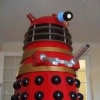
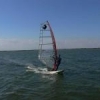
.thumb.jpg.1bfd8b8f095b8a4ccfc9ffc0cbecf59c.jpg)
copy.thumb.jpg.d8f94c146f5d2da12880c4799901d6dc.jpg)
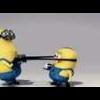

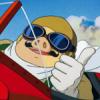



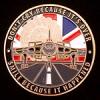


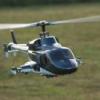

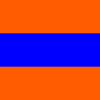
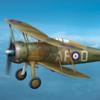




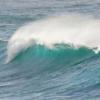

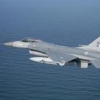
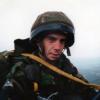

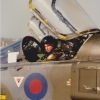
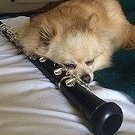
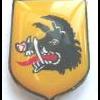


.thumb.jpg.cfc129272ffec824439b15e6013d5952.jpg)
